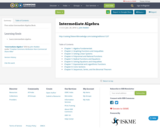
Free online Intermediate Algebra Book.
- Subject:
- Mathematics
- Material Type:
- Textbook
- Date Added:
- 10/27/2012


Free online Intermediate Algebra Book.
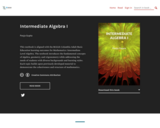
Short Description:
This textbook is aligned with the British Columbia Adult Basic Education learning outcomes for Mathematics: Intermediate Level Algebra. The textbook introduces the fundamental concepts of algebra, geometry, and trigonometry while addressing the needs of students with diverse backgrounds and learning styles. Each topic builds upon previously developed material to demonstrate the cohesiveness and structure of mathematics.
Long Description:
This textbook is the second part of three texts that are aligned with the British Columbia Adult Basic Education learning outcomes for Mathematics: Intermediate Level Algebra. The textbook focuses on topics: Ratio, Proportion, and Percent, Measurement, Perimeter, Area, and Volume and Trigonometry, while addressing the needs of students with diverse backgrounds and learning styles. Each topic builds upon previously developed material to demonstrate the cohesiveness and structure of mathematics.
Word Count: 48093
(Note: This resource's metadata has been created automatically by reformatting and/or combining the information that the author initially provided as part of a bulk import process.)
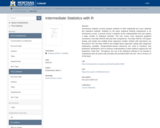
Introductory statistics courses prepare students to think statistically but cover relatively few statistical methods. Building on the basic statistical thinking emphasized in an introductory course, a second course in statistics at the undergraduate level can explore a large number of statistical methods. This text covers more advanced graphical summaries, One-Way ANOVA with pair-wise comparisons, Two-Way ANOVA, Chi-square testing, and simple and multiple linear regression models. Models with interactions are discussed in the Two-Way ANOVA and multiple linear regression setting with categorical explanatory variables. Randomization-based inferences are used to introduce new parametric distributions and to enhance understanding of what evidence against the null hypothesis “looks like”. Throughout, the use of the statistical software R via Rstudio is emphasized with all useful code and data sets provided within the text. This is Version 3.0 of the book.

An Open Education Resource
Short Description:
Mathematical modelling plays an increasingly important role in almost any area of life sciences, and this interactive textbook focuses on the areas of population ecology, infectious diseases, immunology and cell dynamics, gene networks and pharmacokinetics. It is aimed at anyone who is interested in learning about how to model biological systems, including undergraduate and postgraduate mathematics students who have not studied mathematical biology before, life-sciences students with an interest in modelling, and post-16 mathematics students interested in university-level material. Some mathematical knowledge is assumed, and the mathematical models used are all in the form of ordinary differential equations.
Word Count: 41598
(Note: This resource's metadata has been created automatically by reformatting and/or combining the information that the author initially provided as part of a bulk import process.)
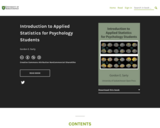
Word Count: 72364
(Note: This resource's metadata has been created automatically by reformatting and/or combining the information that the author initially provided as part of a bulk import process.)
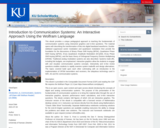
This ebook provides a unique pedagogical approach to teaching the fundamentals of communication systems using interactive graphics and in-line questions. The material opens with describing the transformation of bits into digital baseband waveforms. Double-sideband suppressed carrier modulation and quadrature modulation then provide the foundation for the discussions of Binary Phase Shift Keying (BPSK), Quadrature Phase Shift Keying (QPSK), M-ary Quadrature Amplitude Modulation (M-QAM), M-ary Phase Shift Keying (MPSK), and the basic theory of Orthogonal Frequency Division Multiplexing (OFDM). Traditional analog modulation systems are also described. Systems trade-offs, including link budgets, are emphasized. Interactive graphics allow the students to engage with and visualize communication systems concepts. Interactivity and in-line review questions enables students to rapidly examine system tradeoffs and design alternatives. The topics covered build upon each other culminating with an introduction to the implementation of OFDM transmitters and receivers, the ubiquitous technology used in WiFi, 4G and 5G communication systems.
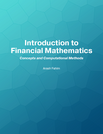
Introduction to Financial Mathematics: Concepts and Computational Methods serves as a primer in financial mathematics with a focus on conceptual understanding of models and problem solving. It includes the mathematical background needed for risk management, such as probability theory, optimization, and the like. The goal of the book is to expose the reader to a wide range of basic problems, some of which emphasize analytic ability, some requiring programming techniques and others focusing on statistical data analysis. In addition, it covers some areas which are outside the scope of mainstream financial mathematics textbooks. For example, it presents marginal account setting by the CCP and systemic risk, and a brief overview of the model risk. Inline exercises and examples are included to help students prepare for exams on this book.

These notes are intended to provide a brief, noncomprehensive introduction to GNU Octave, a free open source alternative to MatLab. The basic syntax and usage is explained through concrete examples from the mathematics courses a math, computer science, or engineering major encounters in the first two years of college: linear algebra, calculus, and differential equations.
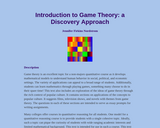
Game theory is an excellent topic for a non-majors quantitative course as it develops mathematical models to understand human behavior in social, political, and economic settings. The variety of applications can appeal to a broad range of students. Additionally, students can learn mathematics through playing games, something many choose to do in their spare time! This text also includes an exploration of the ideas of game theory through the rich context of popular culture. It contains sections on applications of the concepts to popular culture. It suggests films, television shows, and novels with themes from game theory. The questions in each of these sections are intended to serve as essay prompts for writing assignments.
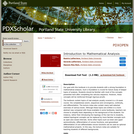
Our goal with this textbook is to provide students with a strong foundation in mathematical analysis. Such a foundation is crucial for future study of deeper topics of analysis. Students should be familiar with most of the concepts presented here after completing the calculus sequence. However, these concepts will be reinforced through rigorous proofs.
The textbook contain topics of real analysis usually covered in a 10-week course: the completeness axiom, sequences and convergence, continuity, and differentiation. The lecture notes also contain many well-selected exercises of various levels. Although these topics are written in a more abstract way compared with those available in some textbooks, teachers can choose to simplify them depending on the background of the students. For instance, rather than introducing the topology of the real line to students, related topological concepts can be replaced by more familiar concepts such as open and closed intervals. Some other topics such as lower and upper semicontinuity, differentiation of convex functions, and generalized differentiation of non-differentiable convex functions can be used as optional mathematical projects. In this way, the lecture notes are suitable for teaching students of different backgrounds.
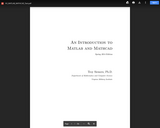
This textbook, or really a “coursebook” for a college freshman-level class, has been updated for Spring 2014 and provides an introduction to programming and problem solving using both Matlab and Mathcad. We provide a balanced selection of introductory exercises and real-world problems (i.e. no “contrived” problems). We include many examples and screenshots to guide the reader. We assume no prior knowledge of Matlab or Mathcad.
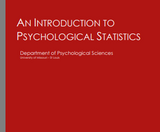
This work has been superseded by Introduction to Statistics in the Psychological Sciences available from https://irl.umsl.edu/oer/25/.
-
We are constantly bombarded by information, and finding a way to filter that information in an objective way is crucial to surviving this onslaught with your sanity intact. This is what statistics, and logic we use in it, enables us to do. Through the lens of statistics, we learn to find the signal hidden in the noise when it is there and to know when an apparent trend or pattern is really just randomness. The study of statistics involves math and relies upon calculations of numbers. But it also relies heavily on how the numbers are chosen and how the statistics are interpreted.
This work was created as part of the University of Missouri’s Affordable and Open Access Educational Resources Initiative (https://www.umsystem.edu/ums/aa/oer). The contents of this work have been adapted from the following Open Access Resources: Online Statistics Education: A Multimedia Course of Study (http://onlinestatbook.com/). Project Leader: David M. Lane, Rice University. Changes to the original works were made by Dr. Garett C. Foster in the Department of Psychological Sciences to tailor the text to fit the needs of the introductory statistics course for psychology majors at the University of Missouri – St. Louis. Materials from the original sources have been combined, reorganized, and added to by the current author, and any conceptual, mathematical, or typographical errors are the responsibility of the current author.

This is a text for a two-term course in introductory real analysis for junior or senior mathematics majors and science students with a serious interest in mathematics. Prospective educators or mathematically gifted high school students can also benefit from the mathematical maturity that can be gained from an introductory real analysis course.
The book is designed to fill the gaps left in the development of calculus as it is usually presented in an elementary course, and to provide the background required for insight into more advanced courses in pure and applied mathematics. The standard elementary calculus sequence is the only specific prerequisite for Chapters 1–5, which deal with real-valued functions. (However, other analysis oriented courses, such as elementary differential equation, also provide useful preparatory experience.) Chapters 6 and 7 require a working knowledge of determinants, matrices and linear transformations, typically available from a first course in linear algebra. Chapter 8 is accessible after completion of Chapters 1–5.
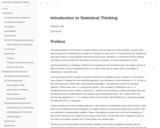
The target audience for this book is college students who are required to learn statistics, students with little background in mathematics and often no motivation to learn more. It is assumed that the students do have basic skills in using computers and have access to one. Moreover, it is assumed that the students are willing to actively follow the discussion in the text, to practice, and more importantly, to think.
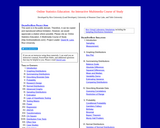
Introduction to Statistics is a resource for learning and teaching introductory statistics. This work is in the public domain. Therefore, it can be copied and reproduced without limitation. However, we would appreciate a citation where possible. Please cite as: Online Statistics Education: A Multimedia Course of Study (http://onlinestatbook.com/). Project Leader: David M. Lane, Rice University. Instructor's manual, PowerPoint Slides, and additional questions are available.

This book, which presupposes familiarity only with the most elementary concepts of arithmetic (divisibility properties, greatest common divisor, etc.), is an expanded version of a series of lectures for graduate students on elementary number theory. Topics include: Compositions and Partitions; Arithmetic Functions; Distribution of Primes; Irrational Numbers; Congruences; Diophantine Equations; Combinatorial Number Theory; and Geometry of Numbers. Three sections of problems (which include exercises as well as unsolved problems) complete the text.
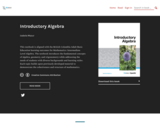
Short Description:
This textbook is aligned with the British Columbia Adult Basic Education learning outcomes for Mathematics: Intermediate Level Algebra. The textbook introduces the fundamental concepts of algebra, geometry, and trigonometry while addressing the needs of students with diverse backgrounds and learning styles. Each topic builds upon previously developed material to demonstrate the cohesiveness and structure of mathematics.
Long Description:
This textbook is aligned with the British Columbia Adult Basic Education learning outcomes for Mathematics: Intermediate Level Algebra. The textbook introduces the fundamental concepts of algebra, geometry, and trigonometry while addressing the needs of students with diverse backgrounds and learning styles. Each topic builds upon previously developed material to demonstrate the cohesiveness and structure of mathematics.
Word Count: 166774
ISBN: 978-1-77420-095-7
(Note: This resource's metadata has been created automatically by reformatting and/or combining the information that the author initially provided as part of a bulk import process.)
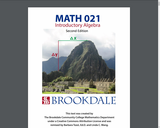
A community college level textbook that provides non-STEM students with a high-quality and academically rigorous book.
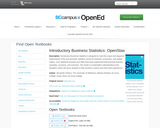
Introductory Business Statistics is designed to meet the scope and sequence requirements of the one-semester statistics course for business, economics, and related majors. Core statistical concepts and skills have been augmented with practical business examples, scenarios, and exercises. The result is a meaningful understanding of the discipline, which will serve students in their business careers and real-world experiences.

The book "Introductory Business Statistics" by Thomas K. Tiemann explores the basic ideas behind statistics, such as populations, samples, the difference between data and information, and most importantly sampling distributions. The author covers topics including descriptive statistics and frequency distributions, normal and t-distributions, hypothesis testing, t-tests, f-tests, analysis of variance, non-parametric tests, and regression basics. Using real-world examples throughout the text, the author hopes to help students understand how statistics works, not just how to "get the right number."